Ventilation of Steel Framed Building in
Hot Climates
In
many parts of the world, it is too hot for comfort for at least part of
the year. It is rarely cost effective to air condition the entire large
volume of a building, so what is then needed is natural ventilation
using air vents and covers to reduce the discomfort.
This
can be provided by directing the predominant wind through the building.
Air feeds in at low level on the windward end but wind can be a
letdown, because on the very hottest days there is sometimes no wind;
and because the prevailing wind can change with the seasons.
The
best way then is not to rely on the wind (but to take advantage of it
when it is there) and to use natural ventilation in the most effective
way.
How
natural ventilation systems work and improvements you can make to
buildings in hot countries:
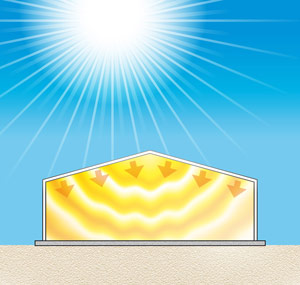 |
The
problem:
Sun
heats the sheeting, which radiates heat into the building. Conduction
heats the air inside and the hot air rises. The hot zone extends
downwards during the day.
These
effects can be reduced by:
- A white roof - white can warm to 50oC.
Black, Dark Green, Dark Red will warm to 110oC !
- Double skin roof insulation - can reduce radiant
heat and also reduces rain noise 30 times!
- Light coloured external walls. Less vital than the
roof, but still adds to comfort.
- White internal liner - reduces radiant heat and
reduces need for too much lighting.
|
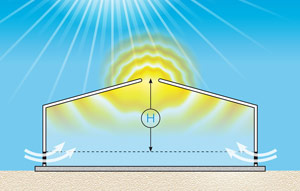 |
The
SIMPLE SOLUTION:
Let
the hot air out at the top . . . let ambient air in at the lowest part.
THE
SOLUTION DETAILS:
Venting
at the roof and on the walls allows natural air circulation which gets
rid of the hottest air and so prevents heat build up. It also cools
underside of roof so reduces radiant heat.
The
amount of air circulation depends on the "chimney height", H which is
the distance from the roof vent to the top of the wall venting. The
bigger the value of H the better the circulation.
However
a roof vent needs a cover, and a simple cover can be susceptible to
wind forcing air back down into the building and letting in rain as
well as attracting birds to nest.
The
best options:
- The REIDsteel ridge vent with cowl and bird mesh.
This design guarantees suction to draw heat out of the building with
any wind direction.
- Ventilated block and/or REIDsteel louvres on the
building sides. Shutters can be added to the louvres to prevent sand
ingress.
- Still Air Boxes - Sand and water ingress can be
prevented further by using still air boxes on the windward side. Air
enters these at high level but enters the building at a low level to
keep the 'chimney height' to a maximum.
- Roof Overhangs can be combined with high level
translucent sheeting and/or glazing to allow some natural light in
without any solar heat gain. The sheeting/glazing should not allow any
ventilation at the eaves.
|
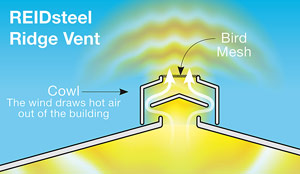 |
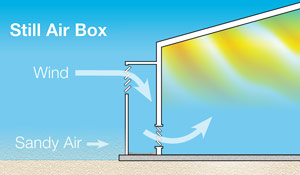 |
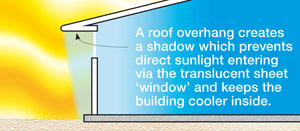 |
|
Don't
Make these Mistakes
|
 |
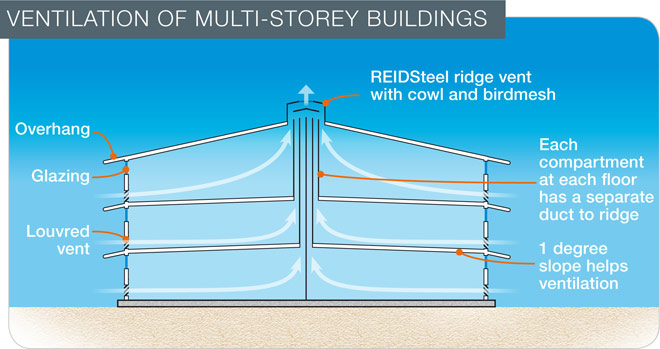
Powered
Ventilation
Ventilation
can be forced using fans, inlet fans or exhaust fans. If used, these
need to be correctly positioned, well maintained and cleaned. In
addition, they constantly use expensive electricity, make a noise and
frequently add to discomfort with draughts and unequal ventilation.
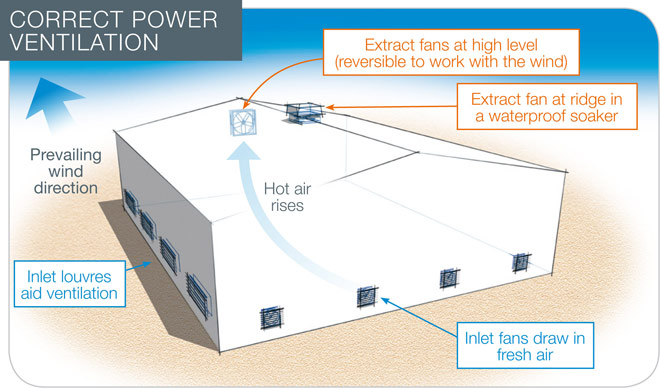
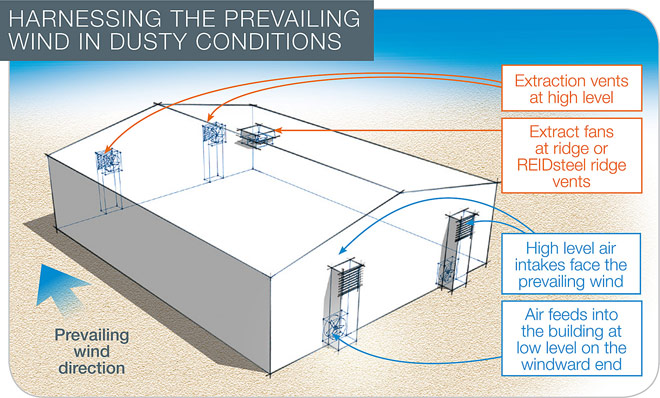
|
